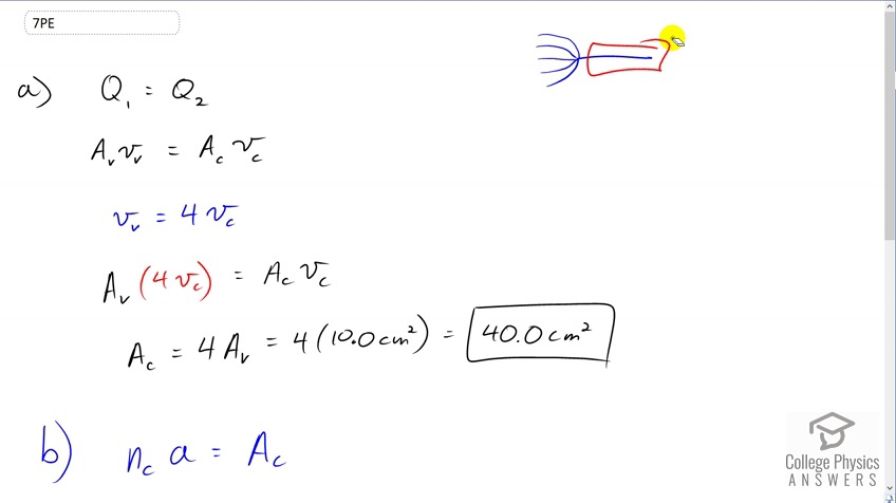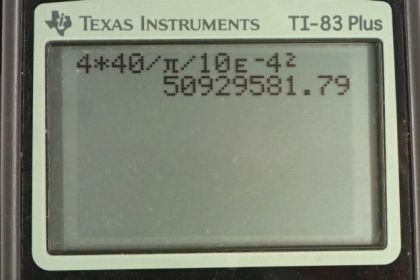Question
(a) As blood passes through the capillary bed in an organ, the capillaries join to form venules (small veins). If the blood speed increases by a factor of 4.00 and the total cross-sectional area of the venules is , what is the total cross-sectional area of the capillaries feeding these venules? (b) How many capillaries are involved if their average diameter is ?
Final Answer
Solution video
OpenStax College Physics, Chapter 12, Problem 7 (Problems & Exercises)

vote with a rating of
votes with an average rating of
.
Calculator Screenshots
Video Transcript
This is College Physics Answers with Shaun Dychko. So we have a bed of capillaries in an organ converging into a larger tube called a venule and we’re asked to figure out what is the cross sectional area in total of all these capillaries. Now we know the volume flow rate of blood in all the capillaries together has to equal the volume flow rate in the venule that they are attached to. So we can say that the cross sectional area of the venule times the speed of the blood through it, equals the cross sectional area of the capillaries times the speed of the blood through the capillaries. And we’re given the relation between the speeds in each type of blood vessel. We’re told that the speed in the venule is four times the speed in the capillaries. So we can substitute 4 vc in place of v subscript v, and then the vcs cancel, and so the total area of the capillaries is four times the area of the venule, so that’s four times ten squared centimeters which is 40 squared centimeters. And then the next question is how many capillaries are there if they have a diameter of such and such. So we’ll take the number of capillaries and multiply it by the cross sectional area of per capillary, and that’s going to equal the total area of all capillaries. So the cross sectional area of one capillary is pi times its diameter squared over four, so we’ll substitute that in for little a, and then we’ll solve for nc by multiplying both sides by four over pi d squared. And we get the number of capillarie is four times its total area of all capillaries divided by pi times the diameter of one capillary squared. So that’s four times 40 centimeters squared divided by pi times this number on the bottom, this is just the way I think about unit conversions here, we want to have centimeters on the bottom in order to match with the centimeters on the top, and we’re told that the diameter of a capillary is ten micrometers and the word micro is the same as times ten to the minus six, that’s what the prefix micro means, so we could write this but I want it to be in centimeters and centimeters means multiply by ten to the minus two, but if I put a centimeter here and multiply by ten to the minus two resulting from that c, then I have to multiply by ten to the positive two to compensate, so in the end changing nothing which is the whole idea. We don’t want to change the number, we just want to change how it looks. And so by putting a ten to the minus two implicitly with the letter c there for centi, we have to compensate and multiply by ten to the positive two to compensate for that ten to the minus two implicit in the prefix centi. And this all works out to ten to the minus four in the end, there are other ways to explain that I guess, but that’s just how I think of it to myself. So we have four times 40 centimeters squared over pi times ten to the minus four centimeters squared, and that gives 5.09 times ten to the seven, that is the number of capillaries going into this particular venule.
